MCL Injury
Read More >
The medial collateral ligament (MCL) of the knee is a strong connective band between the femur and the tibia on the inside of the knee. Its main function is to stabilise the knee joint against inward movements. You can read more about it in our related article: MCL Injury. An MCL injury occurs when the knee has been forced beyond its range and the ligament is stretched or torn. It is common to have an MCL injury with other injuries of the knee such as an ACL Injury or Medial Meniscus Injury.
Rehabilitation exercises, including stretching and strengthening exercises, are essential in the recovery of an MCL injury. Here are some of the most common exercises prescribed. You should consult a physical therapist to guide your treatment as each injury and optimal treatment is individual.
These stretches should be held for 45 seconds and can be repeated several times daily in the early stages of injury.
Step forward with one leg and bend from your hips keeping a straight back. Have your hands on the leg that is stepped forward to keep your knee straight, and bend further from your hips. Keep your foot flat on the floor throughout.
You should feel this at the back of your thigh.
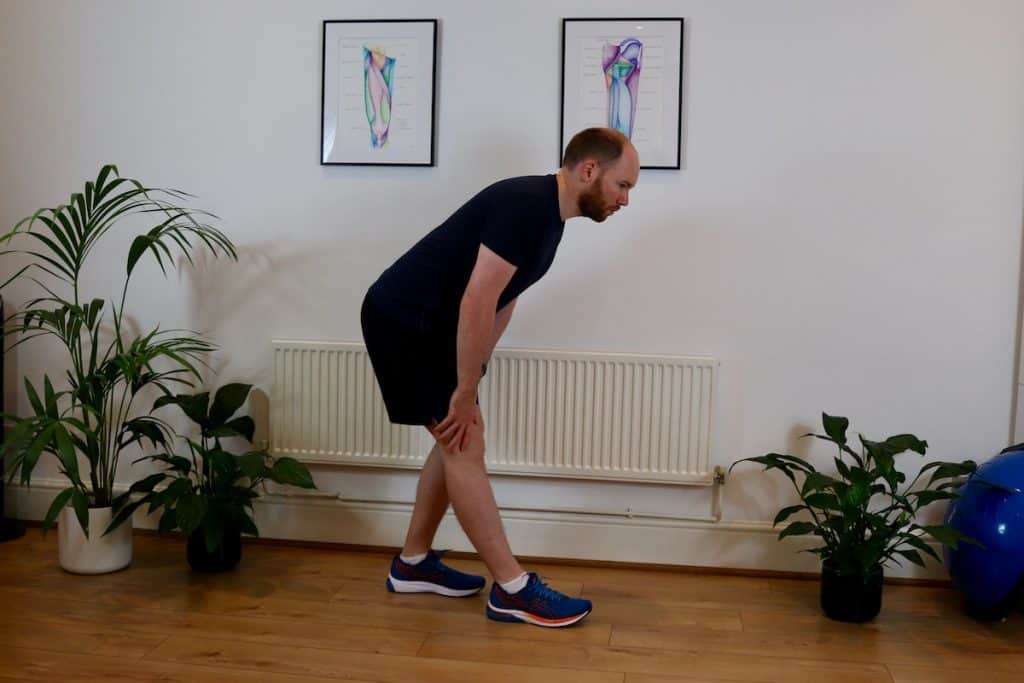
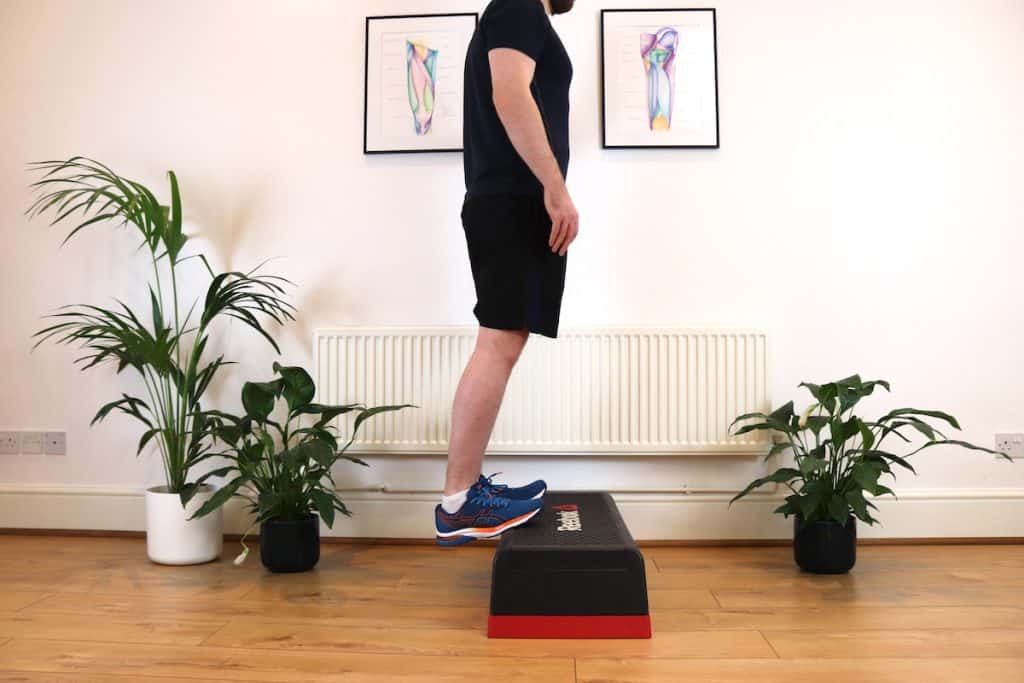
Stand with your feet off the edge of a step. Hold onto a wall for balance. Lower your heels down off the step while keeping your knees straight.
You should feel this at the back of your lower leg.
Lie with a foam roller under your thighs, supporting your weight on your hands or forearms. You can either have both thighs on the roller or just one by crossing your legs as shown in the picture. Slowly move the roller on your muscle, stopping or slowing over any specific points of tenderness or tightness. This should feel like a strong pressure but not be extremely painful.
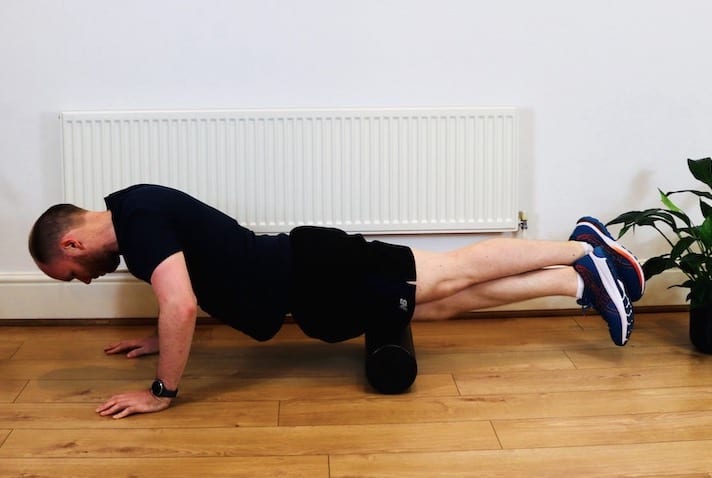
These exercises can be done for 3 sets of 15 repetitions, either daily or on alternate days if muscle fatigue is felt.
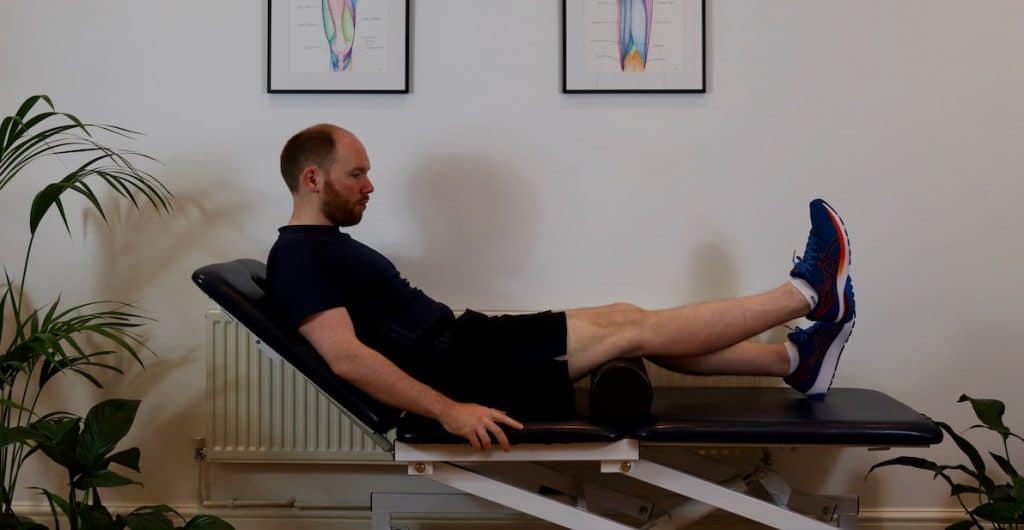
Sit with your knee resting on a foam roller or thick pillow. Push your knee down into the roller or pillow and straighten your knee, lifting your ankle off the floor. Hold this position for 5 seconds, relax, and repeat.
You should feel your quadriceps working.
Lying on your side with a resistance band around your ankles. Keep your bottom leg slightly bent, to help with stability, and your top leg straight. Lift your leg up and backwards into the resistance band.
You should feel your glutes working.
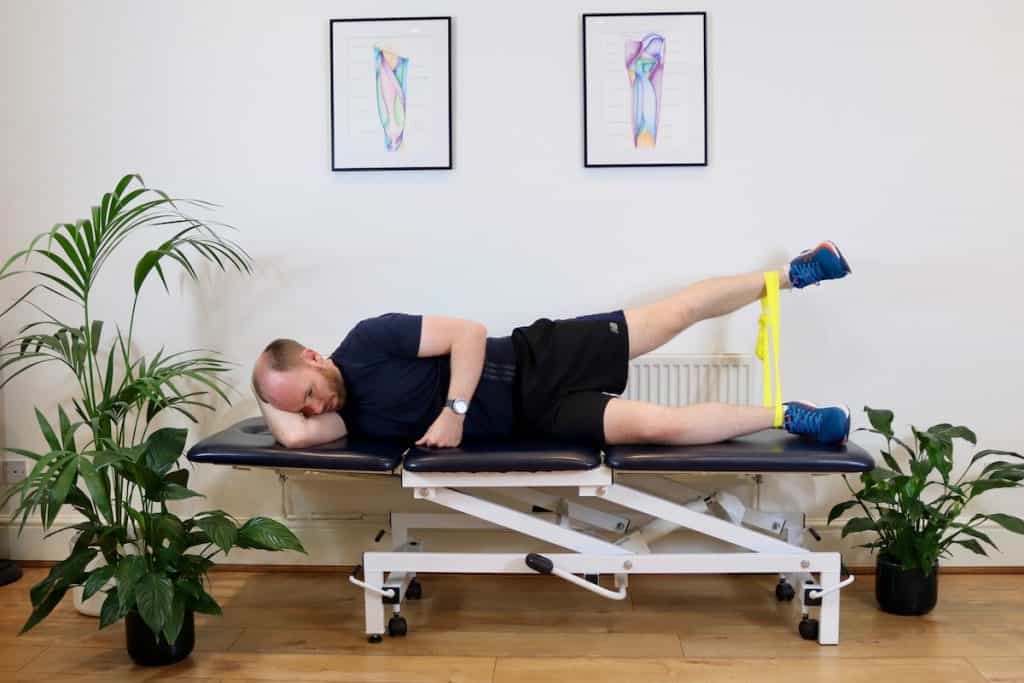
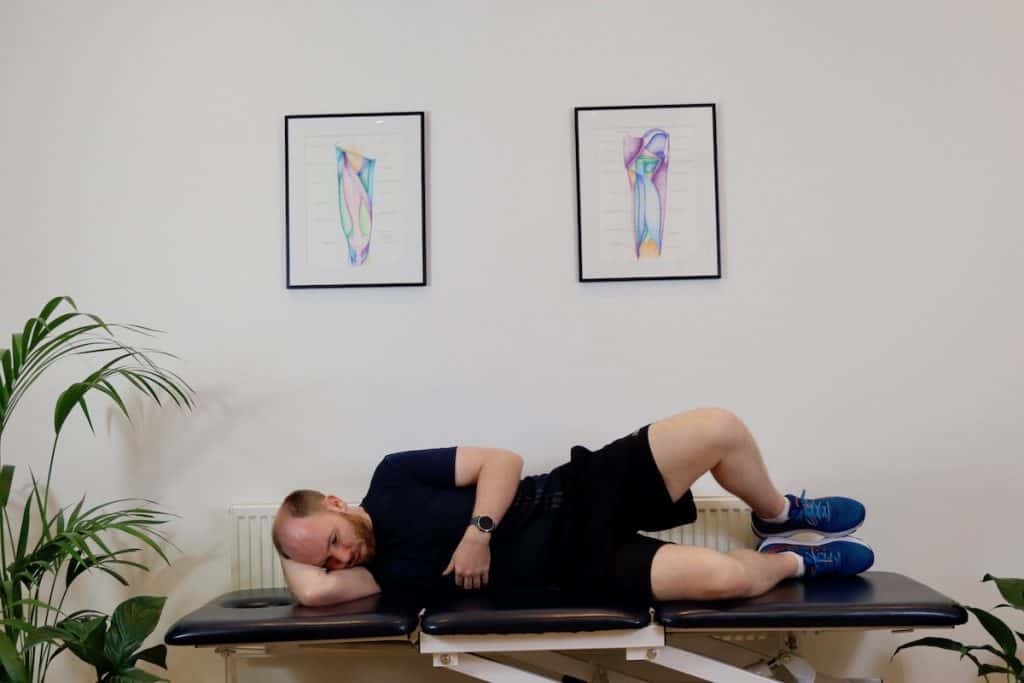
Lying on your side with your ankles together, and knees bent to about 30º. Tip your pelvis forwards and keep it still while you lift your top knee to open you legs.
You should feel you glutes working.
Lying on your back with your heels, hip-width apart and your knees bent to 30º. Tilt your pelvis backwards, to flatten your back against the floor and continue to curl and lift your pelvis off the floor.
You should feel your glutes and hamstring working.
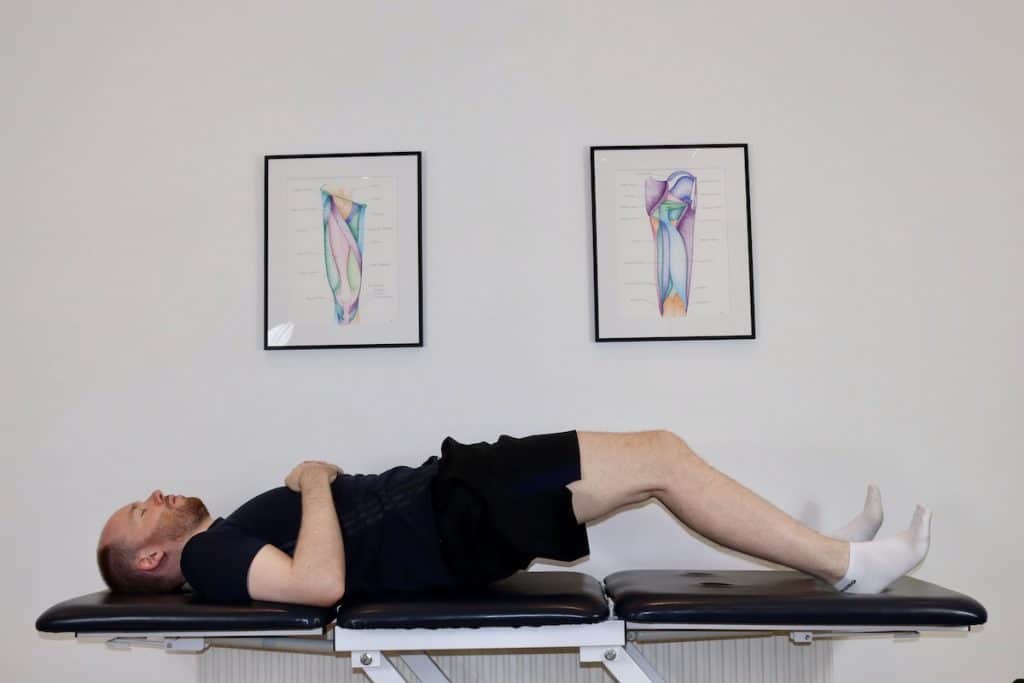
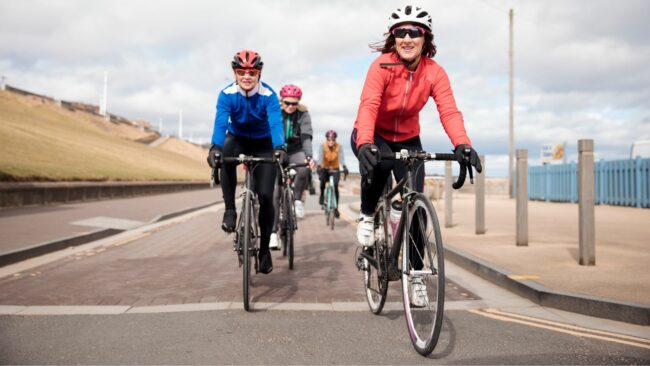
Cycling, or using a static bike, is a good form of exercise when recovering from an MCL injury.
Check that you have a good set-up on the bike to avoid positions that stretch and stress the MCL: full extension and flexion, rotation, and inward movements of the knee.
While golf is a low-impact sport it does require rotation through the knee. Though golf is unlikely to cause an MCL injury it may irritate an existing injury.
It is not recommended to play golf with an acute injury. In most cases, it will be advised to return to play only when the knee is pain-free to walk and on valgus stress of the MCL. Typically this will be 3-4 weeks into the recovery of a Grade 2 tear.

This article is written by James McCormack, a Lower Limb Specialist who is an expert in treating Knee Pain.
This is not medical advice. We recommend a consultation with a medical professional such as James McCormack if you are experiencing any of the symptoms discussed in this article. James offers Online Physiotherapy Appointments weekly and face-to-face appointments in his London clinic.